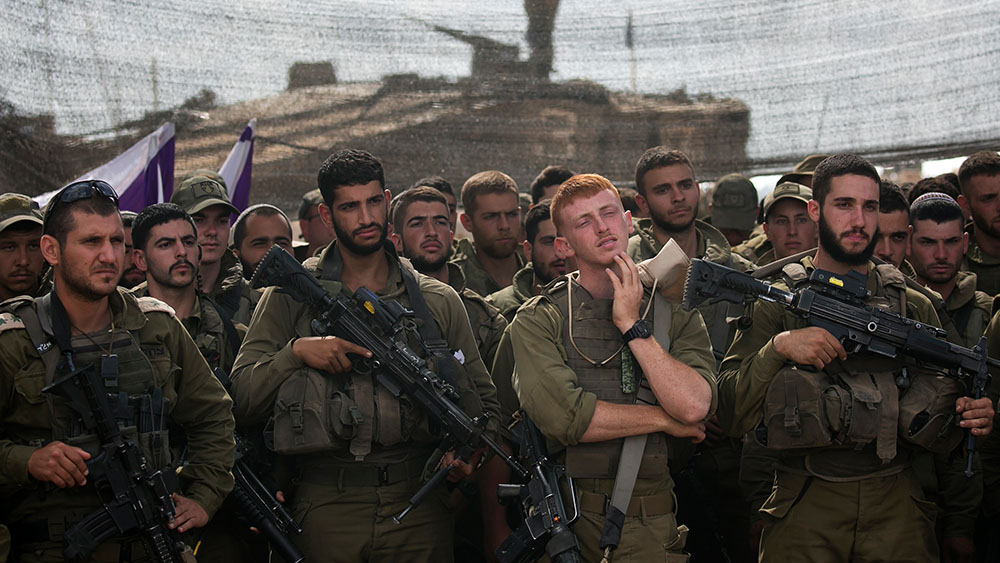Washington keeps a close eye as Russian warships enter the Havana Harbor
06/27/2024 / By Zoey Sky

A Russian Admiral Gorshkov-class frigate and a nuclear-powered submarine were at the Havana Harbor from June 12 to 17. United States officials said the Russian warships were closely monitored the whole time.
Even though both the U.S. and Cuba claimed that the stopover was no threat, analysts considered it a brazen show of force from Russia amid the ongoing Russian special military operation in Ukraine.
When the warships arrived at the harbor, many curious Cuban onlookers, fishermen and police lined the Malecon esplanade boulevard under gray skies to welcome the ships while they passed the 400-year old Morro Castle at the Havana Harbor’s entrance.
The worries aren’t unfounded because Cuba, a long-time ally of Russia, even saluted the ships’ arrival with cannon fire from the harbor. At the same time, Russian diplomats waved small Russian flags and took selfies as the vessels passed the harbor’s historic fortresses.
The Admiral Gorshkov frigate, and later Kazan, half submerged with its crew visible on deck, were accompanied by a tugboat and fuel ship that had arrived earlier on June 12. (Related: Russia’s Medvedev warns Poland: Warsaw will get its share of radioactive ash.)
Russia’s defense ministry said the four Russian vessels sailed to Cuba on June 12 after conducting “high-precision missile weapons” training in the Atlantic Ocean. The ministry added that the submarine and frigate carry Zircon hypersonic missiles, Kalibr cruise missiles and Onyx anti-ship missiles.
Previously, Cuba claimed that the visit was standard practice by naval vessels from countries on good terms with Havana. The communist-run government’s foreign ministry said the fleet carried no nuclear weapons, and U.S. officials said the same thing.
On June 12, White House National Security Adviser Jake Sullivan told reporters that these naval exercises were “routine.” According to Sullivan, these things are common and that they are expected to happen again.
“I’m not going to read into it any particular motives,” said Sullivan. He added that there was no evidence of Russia transferring any missiles to Cuba, but the U.S. would remain vigilant even if it does not “expect anything like that to occur.”
A well-timed “power play”
Havana is located only 100 miles from Key West, Florida, which is also the location of a U.S. Naval Air Station.
William Leogrande, a professor at American University in Washington, D.C., explained that the timing of the visit, which took place as the Biden administration is considering how far to go in helping protect Ukraine against Russia, implies that the visit was more than “standard practice.
Leogrande added that the visiting Russian warships were Putin’s way of telling Biden that Moscow can challenge Washington “in its own sphere of influence.”
The stopover also took place at the same time as Cuba’s worst social and economic crisis in decades, with shortages of food, medicine and fuel. There is also growing discontent on the streets.
Leogrande warned that the recent events has “echoes of the Cold War.” However, he added that unlike the first Cold War, the Cubans are drawn to Moscow not because of ideological affinity but because of economic necessity.
Russia and Cuba has a long history, particularly concerning Russia and its predecessor the Soviet Union.
The Cuban missile crisis peaked in 1962 when the Soviet Union responded to a U.S. missile deployment in Turkey by sending ballistic missiles to Cuba, which triggered a standoff that brought the world to the brink of nuclear war.
Now, amid the Russia-Ukraine conflict, Russia and Cuba are strengthening ties again.
Cuban President Miguel Diaz-Canel visited Russian President Vladimir Putin for the fourth time in May 2024, when the former attended a military parade. Diaz-Canel also wished Russian forces well in Ukraine and also said that “Moscow could always count on Havana’s support.”
Earlier in March, Russia delivered 90,000 metric tons (99,200 U.S. tons) of Russian oil to help Cuba deal with shortages. The former also promised to help Havana with various projects, such as sugar production, infrastructure, renewable energy and tourism.
The history between the two countries was also not lost on many of the Cubans who witnessed the arrival of the Russian warships.
Maria Isabel Quesada, 50, from Old Havana, said that she had “never seen a ship of that size so close. She added that she feels safe and satisfied as a Cuban, adding that she was “confident in having a very beautiful relationship” between Moscow and Havana.
Visit WWIII.news for more stories about how the Russia-Ukraine conflict continues to affect the rest of the world.
Watch the video below as “InfoWars” host Alex Jones discusses the Russian warships that visited Havana Harbor in Cuba.
This video is from the InfoWars channel on Brighteon.com.
More related stories:
Russia’s jamming technology reducing accuracy of U.S. weapons in Ukraine to just 10%.
German warship shoots down two Houthi drones over the Red Sea.
U.S. warship in the Red Sea shoots down attack drones fired by Yemen’s Houthi rebels.
Ex-defense chief: Royal Navy warships are “unsatisfactory” and lack power to attack Houthis on land.
Sources include:
Submit a correction >>
Tagged Under:
Admiral Gorshkov frigate, big government, Canada, chaos, conspiracy, dangerous, havana, Havana Harbor, insanity, military technology, national security, Russia, Russia-Ukraine war, Russian warships, submarine Kazan, Ukraine, Washington, weapons technology, WWIII
This article may contain statements that reflect the opinion of the author
RECENT NEWS & ARTICLES
COPYRIGHT © 2017 WWIII NEWS




















